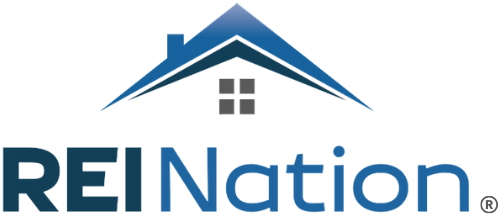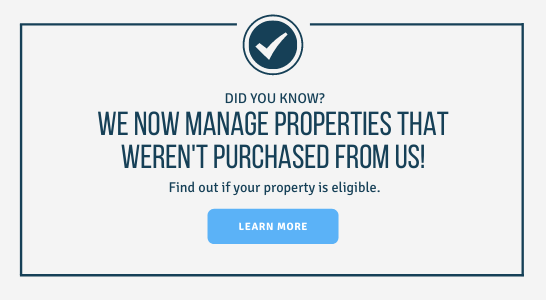-2.jpg?width=300&height=451&name=Blog%20-%20Portrait%20(2)-2.jpg)
Of the 19.3 million rental properties in the United States, 85.6% are single-family rentals. By and large (70.2%), these properties are owned by individual investors. In fact, the smallest portion of rental properties are owned by real estate corporations and REITs – just 1.2%.
So, most people who invest in real estate are just…average. Individuals like you. They invest in hopes of financial freedom, building long-term wealth, and securing generational prosperity for their children, grandchildren, and beyond.
But maybe investing in real estate seems like too much. Too daunting, too risky, too out-of-reach. You would like to do it, but it’s always a “someday” dream rather than a present reality.
What’s in your way? If you’re like many real estate investing hopefuls, it starts with a lack of know-how. You don’t know where to start, what good investments look like, or what you need financially and mentally.
That’s where this guide comes in. We’re going to lay it all out – the why, how, and what now of turnkey real estate investment.
Why Invest in Real Estate?
What do you have to gain from turnkey investing? Real estate investments are lauded as one of the best investments to make for a variety of reasons. And it’s not just a matter of different people getting different things out of the experience. It’s that multiple benefits are working together to make one of the most compelling and resilient assets you can hold.
- Passive Income
- Tax Benefits
- Equity & Appreciation
- Leverage
- Hedge Against Inflation
- Ownership (Over Assets and Decisions)
Real estate investing, in some form, has been a cornerstone of wealth-building for thousands of years. The model we know today has been around since the 1800s and has only become more popular and accessible since. You are part of a community that spans generations and continents.
Let’s Talk Turnkey
Turnkey real estate investment is distinct from other models because it offers the most hands-off experience an investor could hope for. While no investment is entirely hands-off, turnkey real estate comes close, providing a sense of security and peace of mind.
The model varies by turnkey provider, so we’re only speaking for ourselves here. Ensure you investigate individual providers to ensure the level of turnkey services you seek.
The idea, in general, is that investors:
- Work with a turnkey provider that is knowledgeable, established, and experienced in the markets they wish to invest in.
- Buy properties from the provider. These are selected for income-earning potential and have been renovated with appeal, durability, and cost-effectiveness in mind.
- Already have leases and residents in place, meaning the investor can immediately start earning passive income.
- Benefit from leveraged experience in buying, renovating, and managing suitable rental properties as well as market diversification. This reduces mistakes and maximizes cash flow from the get-go.
But let’s be honest: this model isn’t for everyone. Only you can determine whether or not turnkey SFR investing is right for your wealth-building ambitions.
Answer This: What Kind of Investor Are You?
Active VS Passive Investing
Deciding between active and passive real estate investment hinges on several key factors, including your time availability, risk tolerance, expertise, and investment goals. Here's how to determine which approach suits you best:
You Could Be an Active Investor If:
You Have Time to Manage Properties – Active investing requires dealing with residents, maintenance, renovations, and market research. Active investing may be a good fit if you have the time, energy, and resolve to handle these tasks.
You Want Full Control – As an active investor, you make decisions about acquisitions, property management, financing strategies, and exit plans. (There is a high level of control for passive turnkey investors, unlike other passive real estate investment strategies, such as REITs or crowdfunding.)
You Have Industry Expertise or Willing to Learn – Managing an SFR portfolio successfully requires knowledge in market analysis, property valuation, negotiations, and legal compliance.
You Want Higher Returns – If done well, active investing can generate higher cash flow and appreciation because you’re not sharing profits with syndicators, property managers, or fund operators.
You Can Handle Risk & Market Volatility – Active investors must be prepared to navigate market downturns, vacancies, and unexpected expenses.
You Could Be a Passive Investor If:
You Want to Invest Without the Day-to-Day Hassle – Passive investing allows you to benefit from real estate without handling property management, rental resident issues, or maintenance.
You Prefer Diversification Over Control – Passive investors can spread their capital across multiple markets, properties, or asset classes without being tied to one property.
You Have a Stable Income & Want to Supplement It – Passive real estate investing, such as turnkey rentals, provides cash flow without demanding active participation.
You Prioritize Other Business or Career Goals – Passive investing can be a great way to grow wealth without distractions if you're focused on another business, career, or personal pursuits.
You’re Comfortable with Lower but Steady Returns – Passive investments often yield lower but more predictable returns compared to active investments, as you’re paying for property management services and other convenience costs.
Key Question to Ask Yourself:
- Do I want real estate to be my full-time job or just a wealth-building tool?
- Am I willing to handle more risk for higher potential returns?
- Do I have the time and expertise to manage properties effectively?
- Am I comfortable giving up some control in exchange for hands-off income?
If, after going over these points and your investment goals, you see that passive investing is the right course of action for you, it’s time to dig your teeth in. The real work begins when you’ve settled on a direction.
Dig in and Do Research
First, Understand the Components of Turnkey Investing
If you choose turnkey investing, you must first understand the players involved and their roles. Knowing your responsibilities helps you stay on track, while understanding what others oversee helps you identify good partners…and potential red flags.
Property Manager (PM) Responsibilities
A property manager oversees the daily operations of a rental property. If you own a rental but don’t want to manage it yourself, you can hire a PM to handle:
✅ Renter Management – Screening residents, handling lease agreements, and addressing day-to-day concerns.
✅ Rent Collection – Ensuring timely rent payments and enforcing late fees if necessary.
✅ Property Maintenance & Repairs – Coordinating repairs, handling emergency maintenance, and conducting property inspections.
✅ Legal & Compliance Issues – Ensuring the property operates by the book, following local rental laws, and handling evictions if necessary.
✅ Financial Reporting – Providing monthly income/expense statements and tax documents.
📌 Key Point: Property managers do not own the property but act as middlemen between the owner (you) and your residents. They charge a management fee, typically 8-12% of monthly rent, plus additional leasing, maintenance oversight, and eviction handling fees.
Turnkey Company Responsibilities
A turnkey company provides a fully renovated and occupied rental property to investors looking for hands-off real estate investing. They typically handle:
✅ Property Acquisition & Renovation – Buying distressed properties, rehabbing them, and preparing them for rental.
✅ Renter Placement – Securing a resident before selling the property to an investor.
✅ Property Management (Sometimes) – Many turnkey providers offer property management services or refer you to a third-party PM.
✅ Post-Sale Support (Varies) – Some offer ongoing assistance, while others disappear after the sale. Spoiler: We don’t disappear!
📌 Key Point: A turnkey company makes money from property sales and sometimes property management fees. Be aware that not all turnkey companies will be invested in your long-term success.
Passive Investor Responsibilities
As a passive SFR investor, your role is to own the property while outsourcing daily management. Your key responsibilities include:
✅ Acquiring the Right Property – Conducting due diligence, choosing the right market, and selecting a reputable turnkey provider or property manager.
✅ Financing & Insurance – Securing the mortgage, maintaining insurance, and ensuring proper asset protection (LLCs, trusts, etc.).
✅ Portfolio Oversight – Monitoring financial reports from your PM, tracking rental performance, and ensuring profitability.
✅ Strategic Decision-Making – Deciding when to refinance, sell, or expand your portfolio.
📌 Key Point: Passive investors still need to monitor their investments, even if they aren’t involved in daily operations. The level of involvement depends on how much responsibility is delegated to a PM or turnkey company.
Who Does What in Turnkey Investing?
|
Task |
Turnkey Provider |
Property Management |
Passive Investor |
|
Screening & Leasing |
🔑 |
✅ |
❌ |
|
Rent Collection |
🔑 |
✅ |
❌ |
|
Maintenance & Repairs |
🔑 |
✅ |
❌ |
|
Legal Compliance & Evictions |
🔑 |
✅ |
❌ |
|
Property Acquisitions |
✅ |
❌ |
✅ |
|
Property Renovations |
✅ |
❌ |
❌ |
|
Financing & Insurance |
❌ |
❌ |
✅ |
|
Long-Term Investment Strategy |
🔑 |
❌ |
✅ |
|
Portfolio Diversification |
🔑 |
❌ |
✅ |
🔑 = Sometimes or initially. It depends on their property management structure and dedication to an ongoing relationship with investors.
Second, Research Turnkey Providers
Find Reputable Companies
Search for companies with strong track records and positive investor reviews. Reputable companies will gladly provide data and any reasonable information you ask for. They will be transparent about their process and if they’re the right fit for you.
Check for Red Flags
Avoid companies that provide overpriced properties, charge hidden fees, or have bad reviews from investors. Don’t fall for high-pressure tactics that don’t allow you to thoroughly evaluate your options. Look for providers with a long history of success and stability.
Verify the Business Model
For some providers, their role starts and ends with selling you the property, while others offer full property management. We at REI Nation offer both in-house property management and ongoing investor support.
Ask for References
Speak with past investors about their experiences. You can often find discussion groups online with investors speaking candidly about various aspects of investing in real estate. You can also ask the provider directly for testimonials.
Third, Evaluate Investment Markets
Turnkey providers will operate in one or multiple investment markets across the country. First and foremost, you want to ensure they have standardized operating procedures no matter where they are. You should expect the same experience from a provider regardless of where you invest.
But how do you choose a real estate market? That’s a big question, but here are a few quick ways to evaluate whether a market is suited for buy-and-hold investing:
- Population & Job Growth – Cities with economic growth have stronger rental demand. Pay attention to median household income projections, increased employer presence, and small business and start-up growth. These go together with population growth. Current data suggests migration patterns are bringing growth to states with lower tax rates.

- Diverse Industries – Avoid over-reliance on a single employer or industry. You want to see a job market that can weather a downturn.
- Affordable Property Prices – Ensure properties offer a good price-to-rent ratio. If the market is also affordable relative to your income, it makes scaling your portfolio easier.
- Strong Rental Demand – Check vacancy rates, rental comps, and job migration patterns.
Fourth, Analyze Your Financials
Every investor needs a firm financial foundation before they move forward with a property acquisition. This ensures you don’t bite off more than you can chew – and get the best possible terms! Here are your main considerations:
- Credit Score:
- Aim for 680+ for conventional loans.
- 700+ preferred for better rates.
- Debt-to-Income (DTI) Ratio:
- Lenders prefer <45% DTI.
- Rental income may count toward qualifying.
- Down Payment:
- Expect 20%-25% down for most investment property loans.
- 15% may be possible with private mortgage insurance (PMI), but your monthly payment will increase.
- Cash Reserves:
- 3-6 months of mortgage payments required.
- Some lenders require liquid reserves such as savings or stocks.
- Business Structure:
- Many investors invest through an LLC or a self-directed IRA (SDIRA). How you structure your business impacts tax implications, liabilities, and overall risk exposure.
You’ve gone through all these steps to prepare to invest in turnkey real estate. Your research has brought you here to REI Nation. You think we look like a good fit…so what does the process look like?
So, You Want to Invest with REI Nation…
Step #1 – Schedule a One-2-One
When you want to invest with us at REI Nation, you’ll first meet with one of our experienced Portfolio Advisors to discuss your investment goals, preferences, and strategy. Your advisor can help offer insights into whether your investment goals align with our model. Because here’s the thing – we’re not here just to make a sale.
This isn’t a “cut and run” transaction. It’s a partnership with ongoing involvement and support. Your success is our success. So, if our model isn’t the right fit for you…we’ll let you know! Because at the end of the day, we want to equip anyone who calls for an initial consultation to feel empowered, knowledgeable, and prepared to make the right decision for their financial future…whether we’re part of your story or not.
This initial call is short and sweet, wherein you can ask questions and “feel out” our company’s way of doing things. Sometimes, people decide they’re not interested. At other times, they are interested but may not be ready to take the leap. But, if you, at the end of the call, decide you’re prepared to jump in with both feet…here’s what happens next!
Did you know…
REI Nation is:
- Managing >$2 billion in assets
- Serving >3,500 property owners
- Managing >8,000 properties
YoY Rental & Renewal Growth at REI Nation in 2024
2023:
New Leases: 1,688
Lease Renewals: 2,686
2024:
New Leases: 2,017
Lease Renewals: 2,810
Vacancy Rate Comparison
REI Nation: <2%
U.S. Rate (All Rentals): 6.9%
Step #2 – Secure Financing
Prepare your funds by obtaining loan pre-approval or confirming the availability of cash on hand to make a purchase. This process may be virtually identical to preparing to buy a personal residence, but it depends on the type of financing you pursue.
What types of financing do real estate investors utilize?
✅ Conventional Loans (Best for Long-Term Investors)
- 15- to 30-year fixed-rate options.
- Lower interest rates than alternative financing.
- Requires strong credit & financials.
✅ DSCR Loans (Debt-Service Coverage Ratio) (Best for Cash-Flow-Focused Investors)
- Approval is based on rental income, not personal income.
- DSCR = Gross Rent ÷ Mortgage Payment
- Higher interest rates than conventional loans.
✅ Portfolio Loans (Best for Scaling Investors)
- Offered by small banks/private lenders.
- Less strict on credit/income but higher rates.
- Can finance multiple properties under one loan.
✅ Hard Money Loans (Best for Fix-and-Flip or BRRRR Investors)
- Short-term, high-interest (8%-12%) loans.
- Based on property value, not personal financials.
- Faster closing but not ideal for buy-and-hold.
✅ Seller Financing (Best for Off-Market Deals)
- Negotiate directly with the seller.
- Often requires low/no credit checks.
- Flexible terms but not always available.
But in general, for any lender, you will need to provide financial documents:
- Tax returns (2 years)
- W-2s/1099s (or proof of rental income if applicable)
- Bank statements (2-6 months)
- Credit report authorization
- Debt breakdown (loans, credit cards, etc.)
- Get a pre-approval letter to strengthen offers.
Never fear if you’re unsure which lender you want to work with. We have a list of investor-friendly lenders we’ve worked with extensively and are happy to provide recommendations. Our goal is to make the purchase process as smooth and hassle-free as possible.
Step #3 – Select Your Property
Choose one of our expertly renovated properties from any of our 11 high-value markets.
- Memphis, TN
- Little Rock, AR
- Houston, TX
- Dallas-Ft. Worth, TX
- San Antonio, TX
- St. Louis, MO
- Tulsa, OK
- Oklahoma City, OK
- Birmingham, AL
- Tuscaloosa, AL
- Huntsville, AL
The property price point will vary based on individual markets, but each has been expertly selected and renovated with turnkey investors in mind. This isn’t to say that you can skip due diligence, though! Whether you buy with us or with another provider, take these steps to protect your financial future:
First, Basic Due Diligence
Once your offer has been accepted:
- Get an independent home inspection – Don’t rely on the turnkey provider alone. When looking for a home inspector, favor their credentials and certifications, but also mind their experience. Don’t skimp here, either. You get what you pay for with home inspectors. A higher cost generally means a more thorough investigation.
- Verify rental history – Turnkey properties often already have residents generating rental income. Request detailed information on rental income and its consistency.
- Check title & legal issues – Ensure there are no outstanding liens or legal complications muddying the waters. You want a clean transaction that won’t give you a headache later.
- Review property management contract – Who is handling property management? For REI Nation, we use the in-house Premier Property Management Group. They operate in each of our 11 markets, offering 24-hour maintenance and a people-first philosophy. There’s a reason our residents stay for over five years on average, with an overall vacancy rate under 2%!
Here's a bonus: If your property is located in any of our 11 markets, even if you didn’t buy through REI Nation, PPMG is available to manage your investment property.
Crunch the Numbers
- Purchase Price vs. Market Value – Ensure you're not overpaying. However, turnkey investors must also know they will pay a premium upfront. This avoids many of the headaches associated with buying cheap houses. Price isn’t as important as risk mitigation. If you can pay a higher price that comes with a quality, low-maintenance property without the dicey uncertainty of a fixer-upper, it’s likely the better course of action.
- Cash Flow Analysis – Is there positive cash flow after mortgage, taxes, insurance, property management, and reserves? If this is your first investment property, do as much research as possible so you can work with realistic numbers. When in doubt, err on the higher end of expenses.
- Cap Rate & ROI – Evaluate whether returns match your goals. The capitalization rate is calculated with this formula:
- Cap Rate = (Net Operating Income / Property Value) x 100
The cap rate gives a snapshot of the property's profitability compared to its value. You can use this calculation with theoretical properties and their comps or when comparing investments in your portfolio.
What about ROI? It’s a similar comparison calculation that looks at the net profit divided by the cost. Cap rate deals with the value (which may differ from what you paid for the property and often grows over time), whereas ROI looks strictly at what you paid.
There are MANY different calculations real estate investors can rely on for insights into their decision-making. Don’t lean on any one metric, but instead, understand what you want and if different (relevant) calculations hit those benchmarks.
Step #4 – Complete the Closing Process
After you’ve secured financing and selected your property, all that’s left is closing. At REI Nation, you’ll work side-by-side with our team for the necessary legal and administrative steps to finalize the purchase with confidence. The whole closing process begins with the acceptance of your offer – so it includes the following:
- Home Inspection
- Appraisal
- Title Search
- Loan Processing
- Closing Documents
- Final Walkthrough
It also involves receiving your closing disclosure, securing homeowner’s insurance, and negotiating any repairs or credits. Closing can come with a lot of paperwork and legalese, but we work to make it painless and transparent for our investors.
Keep any closing documents in a secure place with digital backups.
Step #5 – Ongoing Support
Now, you own the rental property. What’s next? Well, it varies from turnkey provider to provider. We can only speak for ourselves, and we’ll say this: we pride ourselves on being the best in the business when it comes to ongoing support and communication. An investor should never feel in the dark about performance, problems, or progress.
In addition to platforms you’ll have access to, investors benefit from regular check-ins with their advisors. These conversations are a multi-pronged approach:
- Addressing all property, management, resident, or lease concerns.
- Going over data and relevant metrics to ensure understanding and investor agency in decision-making where they desire it.
- Guiding the process of scaling and refining investment portfolios.
- Walking through optional (but potentially beneficial) strategies, such as a tax-deferred 1031 Exchange, forming business structures, or utilizing an SDIRA to invest.
So, with that, you’re set…but now what?
Passive Investing, NOT Passive Investors
Your journey doesn’t end once you close on a property. Building a successful turnkey portfolio demands more from you. Diligently monitor performance, consult with your management team and advisors, plan out future acquisitions and portfolio adjustments, and continually revisit your financial goals.
When you do, you set yourself up for success in the best investment opportunity on the market.
We’ve helped thousands of buy-and-hold investors build world-class rental portfolios for over twenty years. Will you be next?










.png)
-1.jpg)
